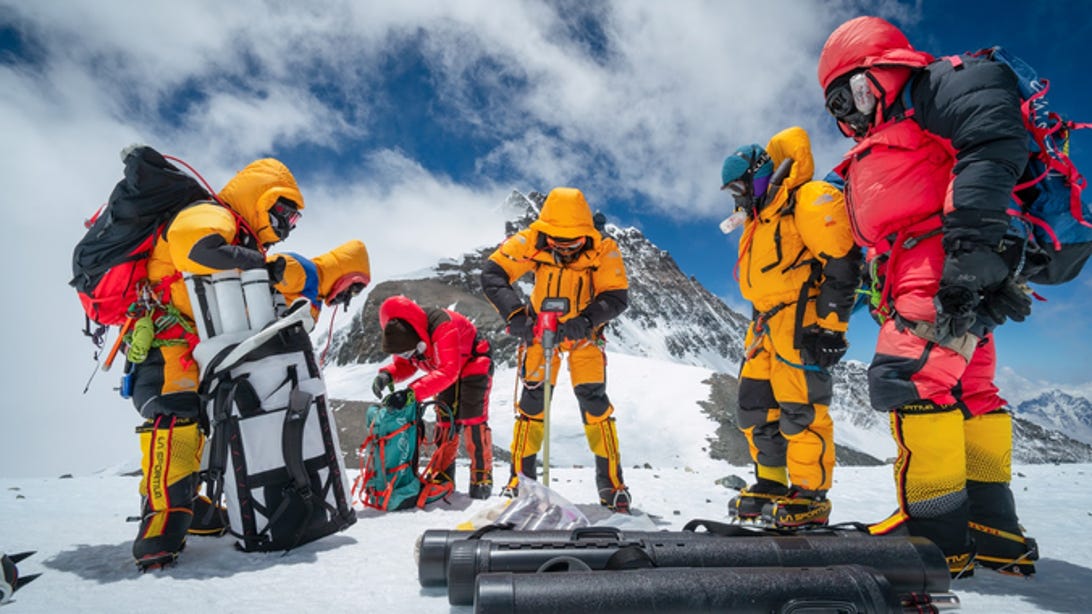Mount Everest’s highest glacier is melting at an alarming rate

The expedition team recovering an ice core at over 26,300 feet.
Dirk Collins/National Geographic
The highest altitude weather station in the world has revealed a worrying trend: human-induced climate change is melting glaciers on Mount Everest, the Earth’s tallest mountain.
A team of climate scientists on a National Geographic and Rolex sponsored expedition in 2019 took critical measurements of the mountain’s South Col Glacier, located just before the ascent to the peak. The team installed a weather station at South Col to monitor conditions and also extracted a 32-foot-long ice core from the highest glacier to assess the impacts of climate change at the roof of the Earth.
The research was published in Nature Climate and Atmospheric Science on Feb. 3.
“It answers one of the big questions posed by our 2019 NGS/Rolex Mount Everest Expedition — whether the highest glaciers on the planet are impacted by human-source climate change,” said Paul Mayewski, a glaciologist at the University of Maine and leader of the expedition, in a press release.
“The answer is a resounding yes, and very significantly since the late 1990s.”
The glacier has turned from the light snowpack to denser ice in the last few decades, which has seen it absorb more radiation from the sun. More heat means more melting and sublimation (the process of solid water becoming water vapor) which sees the glacier thin.
The researchers say that around 180 feet of thinning has occurred in 25 years, which means the glacier is thinning more than 80 times faster than it accumulated. Around 2,000 years worth of ice accumulation has been lost since the 1990s — and based on the current thinning rate, Everest’s glaciers may begin losing decades worth of accumulated ice each year.
The team note that stronger winds and a decrease in relative humidity also played a role in the melt, but rising air temperatures were responsible for the majority of the glacier mass loss. Three years ago, expedition operators working on Everest noted that declining snow and ice coverage was exposing dead bodies of mountaineers who had perished on the climb.
The researchers also suggest the glaciers are disappearing so fast that it will change the way expeditioners climb the mountain in the coming decades. As the glacier’s snow continues to melt, the craggy bedrock underneath will be exposed which could make summiting the mountain’s peak much more difficult, requiring different gear and knowledge.
Around one billion people in the region rely on the freshwater melt from glaciers in the Himalayan mountain range. While glacial melt may be increasing now, their rapid depletion could spell trouble in the future, potentially threatening the region’s access to water.
The 2019 expedition also made another disheartening find about the human impacts on Everest. Microplastics, including polyester and nylon, were discovered in an area scientists considered remote and pristine. It’s likely they came from clothing and climbing ropes.
For all the latest world News Click Here

